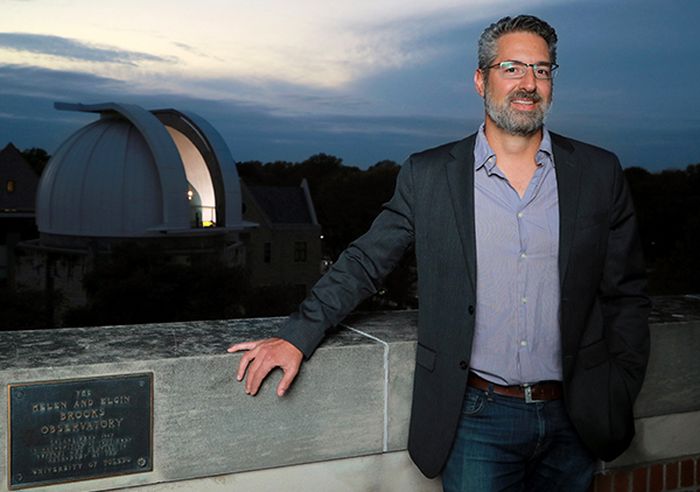Dr. Rupali Chander
–
S12, a post-explosion galaxy located nearly 500 million light-years away.
–
Nationalgeographic.co.id – A husband and wife team of astronomers at The University of Toledo for the first time in their scientific careers during a pandemic, join forces to develop a new method for understanding evolution galaxy. The study outlines a new method for establishing the star formation history of galaxy post-explosion of a star using its cluster population.
To date, the two astronomers are pursuing parallel but separate careers while living domestic life and meeting across countries. Dr. Rupali Chandar, professor of astronomy, and Dr. JD Smith, professor of astronomy and director of the UToledo Ritter Astrophysics Research Center, combines their areas of expertise.
The study also collaborated with UToledo alumnus Dr. Adam Smercina who graduated with a bachelor’s degree in physics in 2015 and is currently a postdoctoral researcher at the University of Washington. The results of the study have been published in The Astrophysical Journal by title “The Star Formation History of a Post-starburst Galaxy Determined from Its Cluster Population“.
In this study, they used NASA’s Hubble Space Telescope to focus on a post-starbursts galaxy about 500 million light-years away. The galaxy, called S12, looks like a jellyfish with a number of stars pouring out of the galaxy on one side.
Also Read: Astronomers Detect Big Bangs in Space Other Than the Big Bang

Daniel Miller, The University of Toledo
–
Dr. Rupali Chander
–
The researchers used an approximate age and mass of star clusters to determine the strength and speed of stellar explosions that stopped more stars from forming in the galaxy. Using this method, the astronomers found that S12 went through two periods of stellar explosion before it stopped forming stars instead of just one.
“Post-starbursts represents a fairly rare phase of galactic evolution today. We think that nearly half of all galaxies go through this phase at some point in their lives. So far, their star formation history has been determined almost exclusively from detailed modeling of starlight merging,” said Smith in a University of Toledo release.
Smith has studied post-explosion galaxies for more than a decade, and Chandar is working on star clusters in galaxies that are typically about three or four times closer than those in Smith’s data.
“Clusters are like fossils, they can age and give us clues about the past history of galaxies. Clusters can only be detected in these galaxies with a clear eye view from the Hubble Space Telescope. No clusters can be detected even in the highest quality images. taken with a telescope on the ground,” Chandar said.
Also Read: Astronomers Observe Rare Events ‘Dance of Death’ Two Stars

Daniel Miller, The University of Toledo
–
Dr. J.D. Smith
–
Smith has led several large multi-wavelength projects to better understand evolutionary history galaxy post-explosion star. He found, for example, that the raw fuels for star formation, namely gas and dust, are still present in surprising amounts in some of these systems including S12. Although there are currently no stars being formed.
Astronomers used well-studied cluster masses and star formation rates at eight galaxy nearby to develop new methods. The method can be applied to determine recent star formation histories for a number of post-explosion stellar systems.
“It definitely has one of the highest star formation levels of galaxy anything we’ve ever studied,” Chandar said. “S12 is galaxy the furthest I’ve ever worked.”
The study shows star formation at S12 stalled 70 million years ago after brief but intense explosions formed some of the most massive clusters known. This method also reveals previous bursts of star formation that could not be detected by previous combined starlight modeling methods.
PROMOTED CONTENT
Featured Videos
– .


